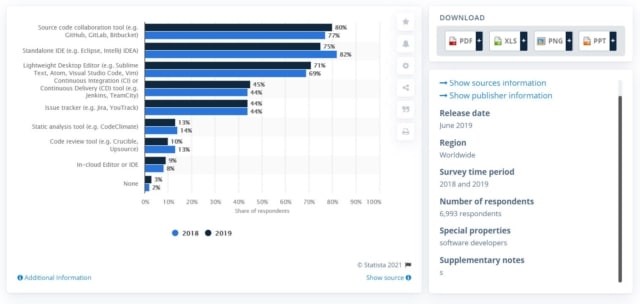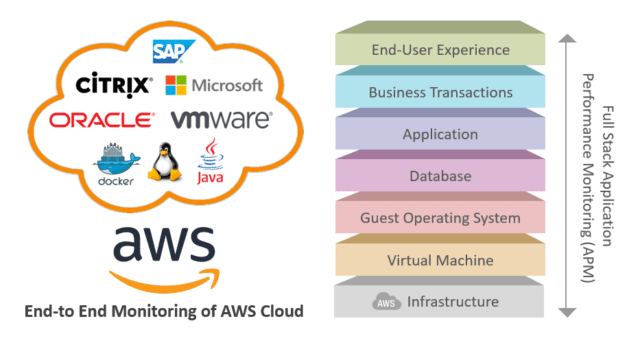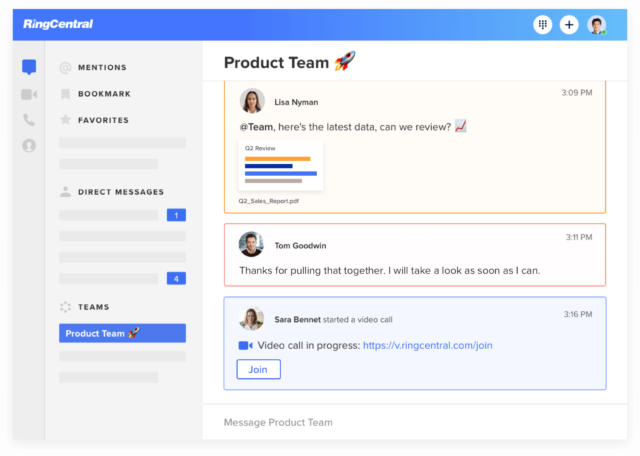Traditionally, software development used to take place on a local machine via desktop apps like the Eclipse IDE, VS Code, or IDEs from JetBrains. While these IDEs are far from redundant – and still the ‘go-to’ option for some developers – cloud IDEs have lately become the development tool of choice.
Cloud IDEs are now one of the most used programming and development tools used by developers and source code collaboration tools like GitHub.

Cloud IDEs are not only cloud-based but can create cloud apps. Some are optimised around the creation of native front-end apps for smartphones and other mobile devices. Recently, with the adoption of cloud and container technologies like Docker images, more software is hosted in the cloud. Consequently, more IDEs are running in the cloud, with a SaaS delivery model becoming increasingly popular.
What is a cloud IDE?
An IDE is a software platform designed to eliminate the hassle of managing development environments. IDEs provide programmers and developers with a set of tools for software development in an ‘all-in-one system. They’re built to work with specific app platforms to overcome the software’s development life cycle barriers. A cloud IDE is ‘development-environment-as-a-service’ and runs in the cloud via a web browser.

Development teams use IDEs to build new software, web pages, services, and applications. IDEs provide developers with all the functionalities they need in just one tool, and since they work cross-platform, they remove the need for separate integrations. They are ideal for coding programming languages, such as Javascript, MySQL, and Python, to specific platforms. Some have integrated features that understand how platforms work using compiling code, debugging, linting, or automation to intelligently complete code.
IDEs differ from typical text editors because they have extra features that make them more powerful, combining code editors with many other features moulded together in one program.
Some online IDEs act as debuggers as well as offering version control and continuous integration.
A robust web-based integrated development cloud platform typically consists of a code editor, compiler, command line, debugger, and an API or a graphical user interface (GUI) builder.

Benefits and challenges of cloud IDE
Benefits
There are many benefits associated with cloud IDEs regardless of the programming language a developer is working with. For example:
- They are accessible from anywhere and on any device – from Chromebooks to Android and iOS devices. Developers can switch between devices whenever they want without any extra set up time.
- They involve minimal download and installation.
- They are extensible and offer greater scalability.
- They streamline real-time collaboration between developers writing code situated in different locations, whether working back end or front end.
- They make it easier to test and deploy code, e.g. CSS or Perl, within the same type of cloud infrastructure likely to run an application in production.
- They are ideal for developers who want to try a new language, framework, or tool without installing it locally.
- Developers can use a separate environment for different clients and keep projects distinct from one another.
- They offer direct integration and access to cloud services.
- Developers can run unknown code without exposing their machine, keeping centralised control of source code.
- Customers can quickly and easily get up to speed using templates and easy to use command lines, along with developer tools in ‘ready to code’ environments.
- It allows developers to work on more than one project at a time and manage multiple development environments.
- Cloud IDEs can integrate via plugins with many open-source management tools. Many open-source code management tools can often be integrated with cloud IDEs. Github is a ‘code collaboration and version control tool that allows users to create their own workflows in the cloud. Bitbucket is another code collaboration tool many developers have in the tech stack – it also integrates with developers’ favourite cloud IDEs to give users unlimited private repositories. It has the flexibility of being able to import from Git, CodePlex, and Google Code.

Challenges
While cloud IDE has many advantages, there are some things to consider before deploying it. For example:
- Cloud IDE can take some time to learn.
- Some developers still prefer a locally running desktop editor because it’s more deeply integrated with local operating systems features.
- Some developers are wary of using cloud IDE because of security concerns – security is run in the cloud by the cloud provider. Linked devices (VMs) are also not always known to be totally secure. An SSH-linked device is necessary to use online coding platforms. The linked device contains confidential information like application configurations and source code. Misconfigurations can lead to security issues.
- When developers are working on a code for a Java application installed and ran on local PCs, using a Java cloud IDE to help create the code would not be a good idea. This is because that code would need to be moved to a local environment to test and build.
Top cloud IDEs for developers
Developers in need of a cloud-based IDE have many options and many pricing levels open to them with characteristics to meet their exact requirements. This can make choosing one a difficult process. It may be a good idea to try out a free version before committing since many offer tutorials and a free private workspace or public workspaces to try out.
1. Cloud9
Cloud9 provides a development environment in the cloud where users can start coding in pre-setup environments called workspaces. They can also collaborate with coding features and build web apps with features like live preview and browser compatibility testing. The software supports PHP, Python, Ruby, JavaScript/Node.js, and Go. Cloud 9 was one of the first cloud-based IDEs to become widely popular.
Now managed by Amazon AWS, it’s free, but developers need to pay to use other AWS resources like simple storage service storage, and elastic compute cloud virtual machines. These resources are necessary because they’re consumed while using Cloud9.

Some of the features of Cloud9 are:
- Real-time collaboration and chat
- Code completion suggestions
- Connection via SSH and FTP
2. Microsoft Visual Studio
Microsoft Visual Studio is an integrated development environment with a full range of features from coding and debugging to testing and deploying to any platform. Visual Studio has functionality around developing apps for Android, iOS, Mac, Windows, web, and cloud. It allows for local development with common emulators, simplified test access, first-class Git experience, and includes Kubernetes support – now included in Microsoft Azure workloads.

Cloud-connected features include regular updates to the development environment and installed extensions. Visual Studio automatically downloads updates in the background so developers can stay focused and run commands on their code while it’s uploading. Developers can manage external libraries without leaving the IDE, sync syntax, and settings with Microsoft account or GitHub identity across several devices.
Visual Studio uses the latest AI-powered code, ‘intelliCode’. It works with GitHub and Azure DevOps to manage to pull requests, do reviews, and collaborate in real-time with other developers and team members so teams can test and troubleshoot apps with ease.
3. Eclipse Che
Many Java developers are familiar with standard Eclipse – a local IDE that’s been popular for some time. Che is the cloud-based version that offers a host of features for developers. It’s open-source and free to host on a user’s own infrastructure and can be used for both a public or private cloud or an on-premises server. Eclipse Che supports a wide range of programming languages and frameworks.
Eclipse Che is a Kubernetes-native IDE that enables one-click centrally hosted workspaces. It enables users to onboard teams with fast runtime, powerful collaboration, automation, and permissions. Workspaces can be shared with anyone, each workspace containing all required projects, snippets and tools.
Other popular cloud IDEs include Codeanywhere, CodePen, Codenvy, and Google Cloud Shell.
Explore RingCentral cloud-based communication solutions for business
Just as cloud IDEs create efficiencies for companies when developing software in the cloud, RingCentral’s cloud-based solutions offer a seamless way to unify business communications and boost productivity. RingCentral’s software-as-a-service model is ideal for companies of all sizes, from a startup to an SME, to bring all communications together in a one-stop solution – just as cloud IDE combines powerful solutions in a single tool.

With RingCentral UCaaS, employees no longer have to switch between various programs or apps. Instead, they can communicate via VoIP, video conferencing, and more, all in one place. Like many cloud IDE providers, RingCentral offers a free trial to test out hosted PBX and enjoy seamless connectivity between employees, management, and customers via a PBX phone system.
One of the chief benefits of web-based cloud IDEs is their improvement in development flows. Typical work review workflows involve many configurations, with developers having to rebuild and run versions of code locally.
Cloud IDE is a cross-platform solution that gives developers the right tools to manage code without switching away from their work. It enables developers to create standardised configurations and templates in a central place and debug all main codes, including HTML.
Cloud IDEs work on any device, including Chromebooks, requiring no setup and connecting to most hosts and cloud vendors. They have a big part to play in the scope of improving the developer’s experience. An improved development experience leads to better software quality.
Originally published Mar 16, 2021, updated May 15, 2021

